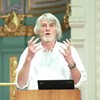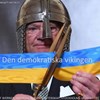sand
Basic income – the key to a free society and a sane economy?
It may sound crazy to pay people an income whether or not they are working or looking for work. But today, with the traditional welfare state creaking under pressure, the idea of a basic income has be

Basinkomst – nyckeln till ett fritt samhället och en sund ekonomi?
Philippe Van Parijs, professor vid Faculty of economic, social and political sciences vid Université catholique de Louvain. Medförfattare (tillsammans med Yannick Vanderborght) till boken "A Radical P

Bilden av Sverige – en förebild eller ett land i kris?
På senare tid har flera beskrivit Sverige som ett land i kris. Inte sällan kopplas krisen till svensk integrationspolitik. Samtidigt får vi rapporter om att mycket överlag har blivit bättre i dagens S
Explosive violence: A near-repeat study of hand grenade detonations and shootings in urban Sweden.
European Journal of Criminology. doi.org/10.1177/1477370818820656 Abstract Hand grenade attacks have increasingly been reported in Sweden. However, to date no research on the topic exists. The present st
Projecting environmental impacts with varying population, affluence and technology using IPAT – Climate change and land use scenarios
Vienna Yearbook of Population Research Abstract We theoretically explore the interrelations between population (P), affluence (A) and technology (T) for various environmental impacts (I ) using IPAT-typ
Exploring maps with greedy navigators
2012. Phys. Rev. Lett.108:128701.
Pathlength scaling in graphs with incomplete navigational information
2011. Physica A 390:3996-4001. The graph-navigability problem concerns how one can find as short paths as possible between a pair of vertices, given an incomplete picture of a graph. We study the navigab
Offentliga samtal: Bilden av Sverige - en förebild eller ett land i kris?
På senare tid har fler beskrivit Sverige som ett land i kris. Inte sällan kopplas krisen till svensk integrationspolitik. Samtidigt får vi rapporter om att mycket överlag har blivit bättre i dagens Sv
Charles Manski: Seminar with a skeptic
Charles F. Manski On the 21st and 22nd of January this year Charles F Manski was in Stockholm, invited by the Institute for Futures studies to hold three lectures on his newly published book Public Poli.
Applying spatial regression to evaluate risk factors for microbiological contamination of urban groundwater sources in Juba, South Sudan
Hydrogeology Journal 25(4) pp. 1077-1091, doi: 10.1007/s10040-016-1504-x Abstract This study developed methodology for statistically assessing groundwater contamination mechanisms. It focused on microbiahumanitarian aid organisation Médecins Sans Frontières in 2010. The factors included hydrogeological settings, land use and socio-economic characteristics. The results showed that the residuals of a conventional probit regression model had a significant positive spatial autocorrelation (Moran’s I =3.05, I-stat = 9.28); therefore, a spatial model was developed that had better goodness-of-fit to the observations. The mostsignificant factor in this model (p-value 0.005) was the distance from a water source to the nearest Tukul area, an area with informal settlements that lack sanitation services. It is thus recommended that future remediation and monitoring efforts in the city be concentrated in such low-income regions. The spatial model differed from the conventional approach: in contrast with the latter case, lowland topography was not significant at the 5% level, as the p-value was 0.074 in the spatial model and 0.040 in the traditional model. This study showed that statistical risk-factor assessments of groundwater contamination need to consider spatial interactions when the water sources are located close to each other. Future studies might further investigate the cut-off distance that reflects spatial autocorrelation. Particularly, these results advise research on urban groundwater quality.








